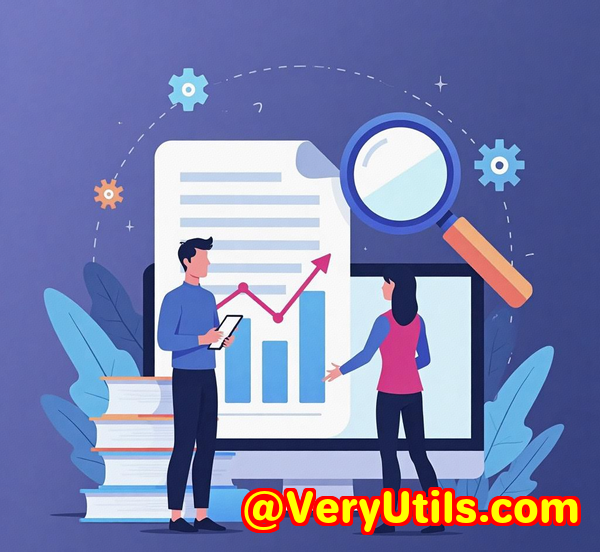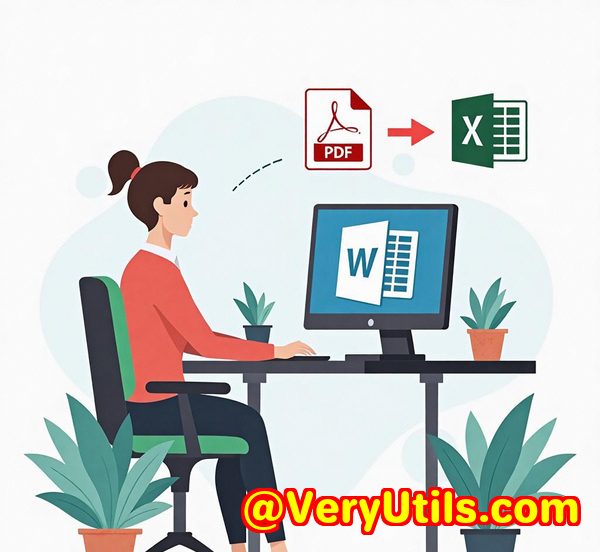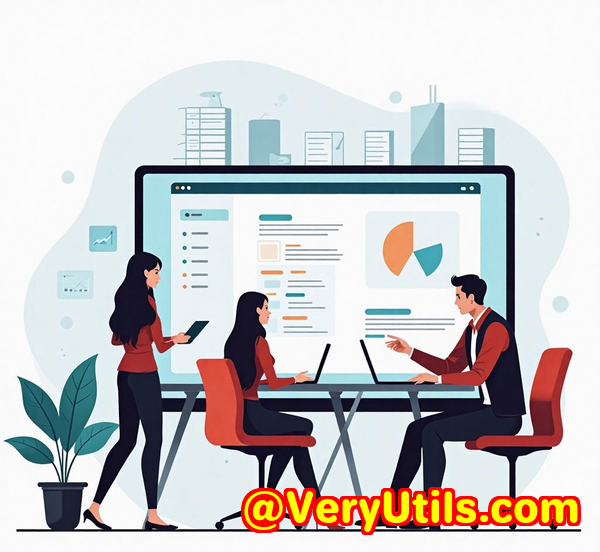How Accountants Can Automate Table Extraction from PDF Invoices into Excel Spreadsheets
How Accountants Can Automate Table Extraction from PDF Invoices into Excel Spreadsheets
Meta Description:
Extracting tables from PDF invoices doesn't have to be painful. Here's how accountants are automating the whole thing using VeryPDF's developer tools.

Every month, invoice processing used to eat up hours of my time.
It was the same routineopen a PDF invoice, squint at the tiny rows of numbers, copy and paste line items into Excel, format the cells, double-check for typos, repeat. Multiply that by 200 vendors and you've got the kind of grind that makes you question your career choices.
The problem wasn't the invoices themselves. It was that everything lived in PDF fileslocked, inconsistent, and not built for data workflows. I wasn't looking for miracles. I just wanted a way to automate extracting tables from PDF invoices into Excelwithout building an entire custom parser from scratch.
That's when I stumbled across VeryPDF PDF Solutions for Developers. Game changer.
How I Found the Right Tool (After Trying All the Wrong Ones)
I tried the usual suspectsthose free online tools, off-the-shelf converters, even a Python script from GitHub. They all fell short. Either they couldn't handle complex layouts, or they mangled the numbers beyond recognition.
Then I found VeryPDF.
At first glance, it looked like something meant for developers. But that's exactly why it worked so well. I realised this wasn't another flashy front-end tool. It was a deep toolbox with precise controlideal for real workflows.
The PDF conversion library from VeryPDF stood out for one reason: it was built for serious use cases like mine.
What It Actually Does (and Why It Works)
This isn't just a "convert PDF to Excel" tool. It's a complete backend engine for transforming, optimising, and extracting structured data from PDF documents.
Here's how I use it:
-
Batch process hundreds of invoices at once
-
Extract tables with clean formatting
-
Export directly into Excel or CSV
-
Handle mixed content: scanned PDFs, vector text, embedded fonts
And most importantly: it doesn't choke on real-world data. No messy column shifts. No cell merging disasters. No lost rows.
Key Features That Made My Life Easier
1. Searchable PDF Conversion with OCR
Not all invoices come in nice, clean digital PDFs. A good chunk of them are scanned images. VeryPDF's OCR feature (part of the PDF/A library) takes those image-based files and turns them into searchable PDFs.
This was a big deal.
I fed in a stack of scanned invoices from older vendors and it automatically recognised the text inside the tables. Then I could extract the data just like any normal PDF. No extra plugins, no manual review.
2. High-Precision Table Extraction
The part that really impressed me was how well it detected and preserved table structures.
Some tools interpret a table as plain text or images. VeryPDF knows the difference between rows, columns, headers, and line items. It gave me clean, tabular data that dropped right into Excelready for formulas, analysis, or uploading to our accounting system.
Even better? It worked on multi-page invoices with nested tables.
3. Batch Processing That Actually Works
I'm not interested in processing one invoice at a time.
VeryPDF supports batch automation out of the box. I hooked it up to a simple script and it now runs through entire folders of PDFs, extracts the tables, and exports them to neatly named Excel files.
Set it. Run it. Go grab coffee.
No more manual labour, no more errors from copy-pasting.
Why It Beats Other Tools I Tried
Here's the blunt truth:
-
Free tools? Great for one-off jobs. Terrible for consistency.
-
Online platforms? Risky for sensitive data like invoices.
-
Generic converters? Not smart enough to understand invoice layouts.
VeryPDF doesn't pretend to be sexyit just works. It's made for developers, accountants, ops teamsanyone who needs to process documents at scale.
It gives you control. You set the rules, define how it handles images, text layers, compression, layout, metadata. And it plays nicely with existing systemswhether you're on Windows, Linux, or integrating with ERP platforms.
How I Use It Weekly in My Workflow
My current setup looks like this:
-
Vendor emails PDF invoices saved to a shared folder.
-
Automation script runs nightly using VeryPDF's SDK.
-
OCR kicks in if the PDF is scanned.
-
Table extraction happens, with all data exported into clean Excel files.
-
Files are uploaded to our finance system or reviewed by junior accountants.
This alone saves us 20+ hours per week. And because the extraction is consistent, our review time has dropped by half.
One more thing: it's reliable. No random bugs, no crashes, no missing rows.
Use Cases Beyond Accounting
If you're in finance or accounting, this is a no-brainer. But I've seen other teams use it for:
-
Legal firms extracting tables from court documents.
-
Healthcare providers processing scanned lab results.
-
Procurement departments pulling order details from supplier PDFs.
-
Auditors reviewing historical records with complex layouts.
-
Data analysts converting reports into spreadsheets for BI tools.
Wherever there's structured data stuck in a PDF, this tool earns its keep.
Who Should Seriously Look Into This
-
Accountants drowning in invoices
-
Finance teams dealing with PDF bank statements
-
IT departments needing backend automation
-
Outsourcing firms processing data at scale
-
Anyone who needs clean, consistent table data from PDFs
If your workflow has more than 10 PDFs a day, this will save you money and sanity.
Bottom Line
VeryPDF PDF Solutions for Developers turned a frustrating, repetitive task into a smooth, automated flow.
No fluff. Just results.
If you're trying to automate table extraction from PDF invoices into Excel spreadsheets, I'd highly recommend this tool.
Start automating your PDF workflow today:
Custom Development Services by VeryPDF.com Inc.
If your needs go beyond off-the-shelf solutions, VeryPDF also offers custom development.
Whether you're running on Linux, Windows, macOS, or embedded systems, they can build tailored solutions that plug directly into your tech stack.
Their experience covers everything from PDF rendering, printing, barcode recognition, OCR, font technology, digital signatures, virtual printer drivers, to secure document workflows.
They've built tools for:
-
File conversion and compression
-
Font embedding and subsetting
-
Document form generation
-
Real-time monitoring of print jobs
-
Cloud APIs for document handling
-
Secure archiving with PDF/A and encryption
Got something specific in mind? Reach out to them via their support centre here:
FAQs
How do I extract tables from scanned PDFs?
Use the OCR feature in VeryPDF's PDF/A library. It turns scanned image content into searchable, extractable text.
Can this process multiple PDFs at once?
Yes. VeryPDF supports batch processing so you can automate extraction across hundreds or thousands of files.
Does it maintain table formatting in Excel?
Absolutely. Table structures are preserved with clean row/column layout, making it easy to use in spreadsheets.
Is this secure for processing sensitive financial data?
Yes. It can run entirely on-premise, with no cloud dependencyperfect for finance and legal compliance.
Do I need to be a developer to use this?
While the SDK is developer-focused, even tech-savvy accountants or IT staff can integrate it with basic scripting.
Tags / Keywords
-
automate table extraction from PDF invoices
-
batch PDF to Excel for accountants
-
extract invoice data from PDF
-
OCR PDF to Excel for scanned invoices
-
VeryPDF PDF Solutions for Developers



